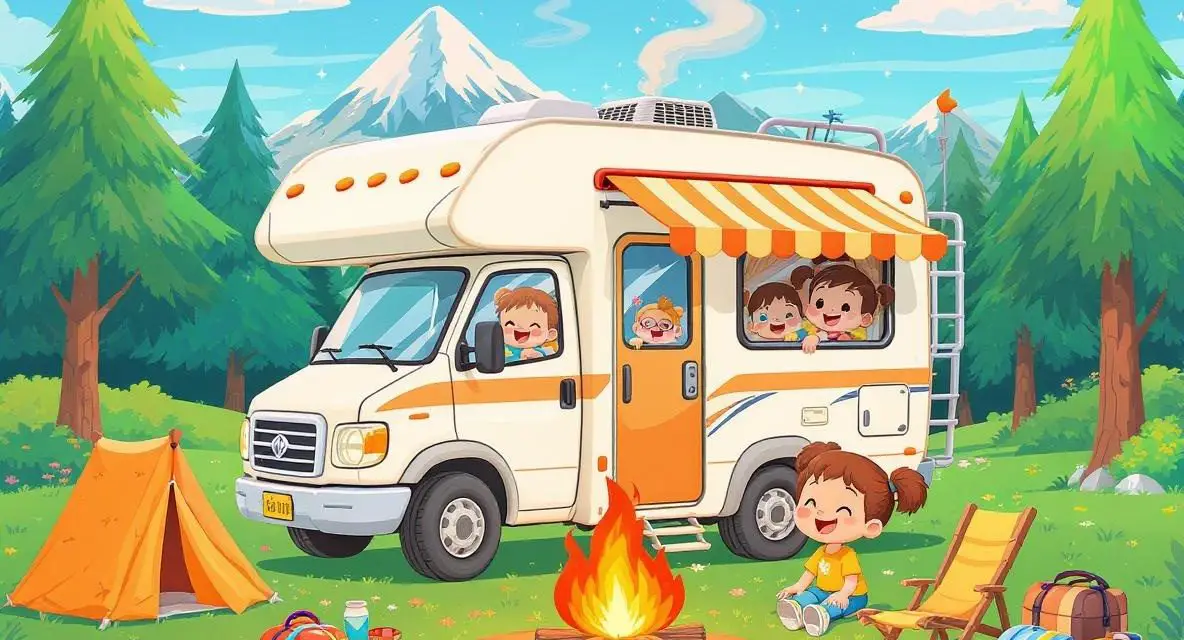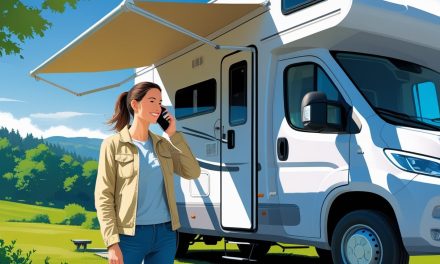Would you like to save this article?
Getting ready to hit the road in your brand new RV? You’re about to embark on an incredible adventure, but before you start planning those epic road trips, you need to know what pitfalls await unsuspecting newbies. Every year, thousands of first-time RV owners make the same costly mistakes that could easily be avoided with the right knowledge.
Here are the top 11 blunders that can turn your dream vacation into a nightmare – and more importantly, shows you exactly how to sidestep each one. Whether you’re considering buying your first motorhome or you’ve just picked up the keys, these insider tips will save you money, stress, and potentially dangerous situations on the road. Get ready to become the smartest RV owner in the campground!
1. Packing Like You’re Moving Your Entire House
Here’s the deal: Your RV isn’t a magical storage unit with unlimited capacity. Most motorhomes have a maximum weight limit of 3,500 kg (about 7,716 pounds), and once you subtract the vehicle’s mass in running order – typically around 2,921 kg – you’re left with just 579 kg (approximately 1,276 pounds) of payload capacity.
The harsh reality? Four people with clothes, food, and camping gear can easily exceed this limit if you’re not careful. According to RV industry statistics, weight violations are among the top reasons for roadside breakdowns and tire failures.
| Item Category | Typical Weight | Smart Packing Tips |
|---|---|---|
| Clothing (4 people) | 80-120 lbs | Use packing cubes, pack for laundry every 5-7 days |
| Food & Water | 100-200 lbs | Buy groceries at destination, carry minimal water |
| Camping Gear | 50-100 lbs | Choose lightweight, multi-purpose items |
| Personal Items | 30-60 lbs | Limit electronics, books, and souvenirs |
You think bringing everything but the kitchen sink is smart, but guess what? Your RV already has a kitchen sink! If you’re cramming items into every nook and cranny like you’re playing the world’s most expensive game of Tetris, you’re setting yourself up for an overweight disaster that’ll have you unloading half your belongings on the side of the highway.
2. Driving Blind to Your RV’s Actual Size
Your shiny new motorhome isn’t your Honda Civic. Most RVs measure 2.35 meters wide and nearly 3 meters tall – that’s about 7.7 feet wide and almost 10 feet high. Bridge clearances, narrow country roads, and overhanging branches become your new worst enemies.
The shocking truth? Insurance companies report that height-related damage claims cost RV owners an average of $15,000 per incident. Low bridges don’t just scrape your roof – they can completely destroy your air conditioning units, satellite dishes, and solar panels.
You probably think memorizing your RV’s dimensions is overkill, but when you’re barreling toward a 9-foot bridge at 50 mph and your RV is 9.8 feet tall, those decimal points suddenly become the difference between continuing your vacation and calling your insurance company from the side of the road.
3. Winging It With Route Planning
GPS systems lie to RV owners. Even RV-specific navigation systems can route you down narrow B-roads that’ll have you white-knuckling the steering wheel while oncoming traffic forces you to squeeze past with millimeters to spare.
Professional RV drivers follow the “A-road rule”: Stick to major highways and trunk roads whenever possible. Those extra 5-10 miles you might add to your journey pale in comparison to the stress and potential damage from navigating narrow country lanes.
Essential Route Planning Tools:
- Google Street View (check for trucks on the roads you’re considering)
- RV-specific GPS units with height and weight restrictions
- Campground reviews mentioning access road conditions
- State DOT websites for bridge and road restriction information
You might think taking scenic shortcuts makes you an adventurous traveler, but when you’re stuck on a single-track road with a stone wall on one side and a 200-foot cliff on the other, you’ll realize that sometimes the boring route is the brilliant route.
4. Turning Your Gas Hob Into Expensive Modern Art
Your RV’s gas hob has a glass top that costs around $300-500 to replace. One poorly secured can of beans bouncing around while you drive is all it takes to turn your cooking surface into a spider web of expensive cracks.
Industry data shows that glass hob replacements are among the top five most common RV warranty claims. The fix is embarrassingly simple: never store anything heavy in the cupboards directly above your stove.
Smart Storage Solutions:
- Lightweight items only in overhead compartments near the hob
- Heavy cans and bottles in low, secure cabinets
- Magnetic strips for knives instead of overhead storage
- Bungee cords or cargo nets to secure loose items
You’d think common sense would prevent people from storing bowling balls above fragile glass, but apparently, the siren call of convenient storage space makes even smart people forget about basic physics – until gravity sends their dinner plates crashing through their cooktop.
5. Going Cheap on Your Electric Hookup Cable
That cute 10-meter electric cable that came with your starter kit? It’s about as useful as a chocolate teapot in most campgrounds. You’ll find yourself performing Olympic-level parking gymnastics just to reach the hookup point – and still coming up short.
RV campground surveys reveal that electrical hookup points are positioned an average of 15-20 meters from standard parking spots. A 25-meter cable covers virtually every scenario and eliminates the stress of wondering whether you’ll reach power.
Critical Safety Reminder: You must unwind the entire cable, even if you don’t need the full length. Coiled cables create induction heating that can start fires.
You might think buying extra cable length is wasteful spending, but when you’re watching other campers enjoy their evening meal under electric lights while you’re rationing your battery power like you’re on a polar expedition, that extra cable starts looking like the smartest purchase you’ve ever made.
6. Ignoring Your Heating System Until It Breaks
Your RV’s heating system will throw error codes at the worst possible moments – usually when you’re camping in sub-zero temperatures with no cell service and the nearest RV dealer is 200 miles away.
Heating system failures account for 30% of all RV emergency service calls during winter months. The solution costs nothing: print out the error code manual from your heating system manufacturer and keep it in your RV permanently.
Common Heating System Brands & Resources:
- Truma: Full error code database on truma.com
- Webasto: Diagnostic guides available at webasto.com
- Dometic: Troubleshooting PDFs in owner resources section
- Suburban: Complete manuals at suburbanrv.com
You probably figure you’ll just Google any problems when they arise, but Murphy’s Law dictates that your heating system will only malfunction in areas where cell towers fear to tread, leaving you colder than a penguin’s toenails with no way to diagnose the problem.
7. Expecting Magic From Your Electrical System
Newsflash: Your RV’s standard 230-volt outlets don’t work by magic. They need to be connected to shore power (electric hookup) to function. Your 12-volt systems will work off battery power, but those three-pin sockets? Absolutely useless without external electricity.
This misconception leads to countless frustrated calls to RV dealers from customers who think their electrical system is broken. Understanding this basic principle can save you an embarrassing service call and diagnostic fees.
RV Electrical System Breakdown:
- 12V Systems: Lights, water pump, fans (run on battery)
- 230V Systems: Outlets, microwave, air conditioning (need shore power)
- Inverter Systems: Can convert 12V to 230V (optional equipment)
- Generator Systems: Provide 230V power when boondocking
You’d think electrical systems would be intuitive, but apparently expecting wall outlets to work without being plugged into the grid is like expecting your TV remote to work without batteries – technically possible with the right equipment, but not standard in most setups.
8. Underestimating the Tree Menace
Trees are your RV’s natural enemy. Those picturesque country lanes lined with mature oak trees aren’t just scenic – they’re obstacle courses designed to test your mirror-preservation skills.
Insurance statistics show that mirror replacement is the second most common RV damage claim, with costs ranging from $450-800 per mirror for OEM parts. When you’re driving a 2.35-meter-wide vehicle down roads barely wide enough for two cars, those mirrors become expensive casualties.
Tree-Survival Strategies:
- Use Google Street View to preview routes
- Look for commercial vehicles in Street View images (good sign for width)
- Avoid routes during leaf season when branches hang lower
- Consider mirror protectors for heavily wooded areas
You might think you’re being paranoid about tree branches, but when a low-hanging limb takes out your $500 mirror faster than you can say “scenic route,” you’ll realize that paranoia was actually just expensive common sense trying to save you money.
9. Falling for the Moisture Trap Marketing Scam
Modern RVs are engineered with proper ventilation systems. Moisture traps are not only unnecessary – they can actually create problems by pulling moisture from outside your RV into the interior.
Ventilation engineers design RV airflow systems with specific intake and exhaust points. Your RV’s hab door steps have holes for ventilation, roof vents are strategically positioned, and wall vents are placed for optimal air circulation. Adding moisture traps disrupts this carefully designed system.
Built-in Ventilation Features:
- Roof vents with automatic humidity sensors
- Floor vents in step areas
- Wall vents positioned for cross-ventilation
- Hab door seals designed with airflow gaps
You’d think adding moisture absorbers would help keep things dry, but it’s like installing a vacuum cleaner in your car’s engine bay and expecting better performance – sometimes more isn’t better, it’s just more complicated and potentially harmful.
10. The Great Toilet Cassette Cap Catastrophe
Every RV owner has a horror story about losing their toilet cassette cap down the disposal point. This $50 piece of plastic becomes irreplaceable at 3 PM on a Sunday when you’re 200 miles from the nearest RV dealer.
RV park managers report that toilet cassette caps are among the most common items retrieved from disposal points during monthly cleanings. The solution is ridiculously simple: Always place the cap on the ground while emptying – never on the edge of the disposal point.
Toilet Maintenance Best Practices:
- Cap goes on the ground during emptying
- Rinse thoroughly with provided hose
- Check seals regularly for wear
- Carry spare toilet chemicals for extended trips
You probably think you’re too careful to drop something as important as a toilet cap, but apparently the combination of unpleasant odors, moving water, and the urgent desire to finish this particular chore as quickly as possible creates the perfect storm for butterfingers.
11. BONUS: Choosing Internal Window Covers Over External Ones
Internal blinds and covers create condensation nightmares. When you close internal window coverings, you trap moisture between the blind and the glass, creating a mini greenhouse effect that leaves you waking up to rivers of condensation streaming down your windows.
External windscreen covers allow your RV’s ventilation system to function properly. The temperature differential stays on the outside of the glass, preventing condensation formation entirely.
Condensation Prevention Comparison:
| Coverage Type | Condensation Level | Privacy | Insulation | Cost |
|---|---|---|---|---|
| Internal Blinds | Heavy | Excellent | Poor | $200-400 |
| External Covers | None | Good | Excellent | $150-300 |
| No Coverage | Minimal | None | None | $0 |
You might think internal blinds provide better privacy and convenience, but when you’re spending your morning mopping condensation instead of enjoying coffee with a view, you’ll discover that external covers aren’t just better – they’re the difference between waking up in comfort and waking up in a swamp.
Final Thoughts
These 11 mistakes represent years of collective RV wisdom distilled into actionable advice. Every seasoned RV owner has made at least a few of these errors – the smart ones learn from them and pass the knowledge forward.
Your RV adventures should be about creating memories, not expensive repair bills. By avoiding these common pitfalls, you’ll spend more time enjoying the open road and less time dealing with preventable problems.
Ready to become the RV owner everyone comes to for advice? Share this guide with fellow newbies and help build a community of informed, prepared, and happy campers!
SOURCES
- Live for Travel YouTube Channel – TOP 10 MISTAKES NEWBIE CAMPERVAN & MOTORHOME OWNERS MAKE
- Roadtrippers – 10 mistakes beginner RVers should avoid
- Outdoorsy – Candid look at one first-time RV owner’s mistakes
- Follow Your Detour – Learn From Our Mistakes: 4 Tips for Newbie RVers
- Camping World – 65 Biggest RV Mistakes to Avoid
- Winnebago – 18 RVing Mistakes You Can Easily Avoid
- RV Life – The 14 Worst RV Mistakes You Can Make As A Beginner





